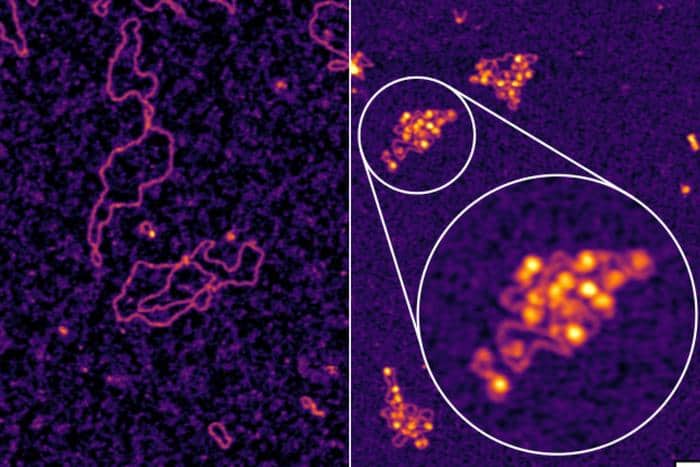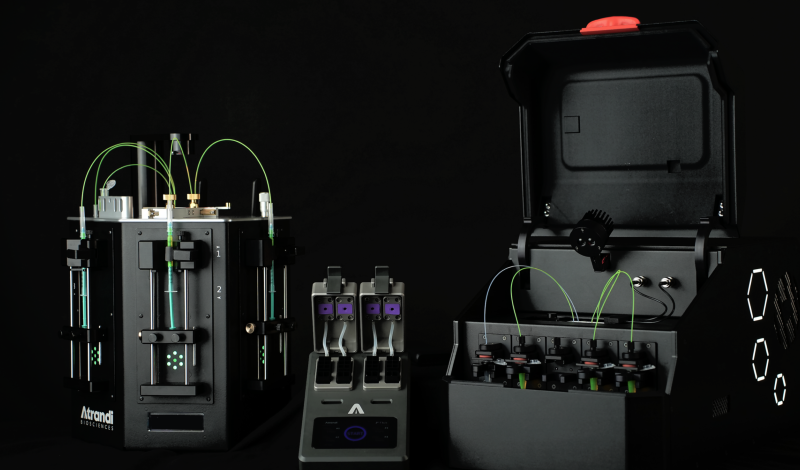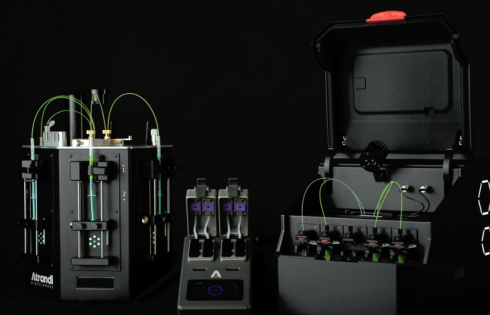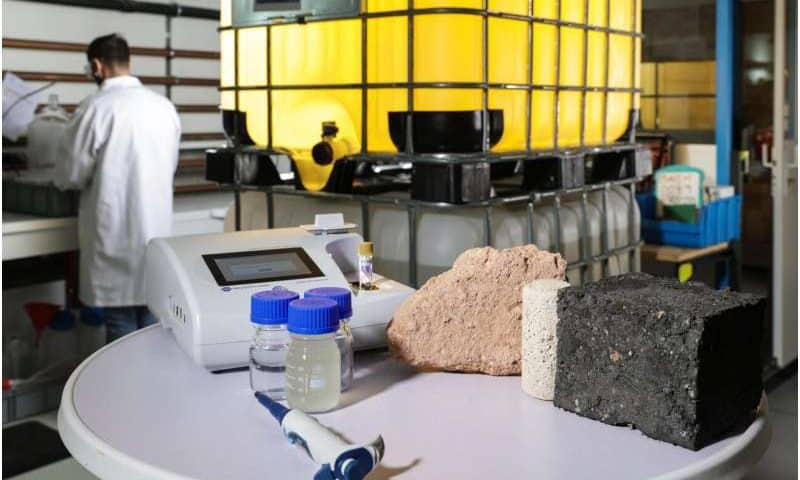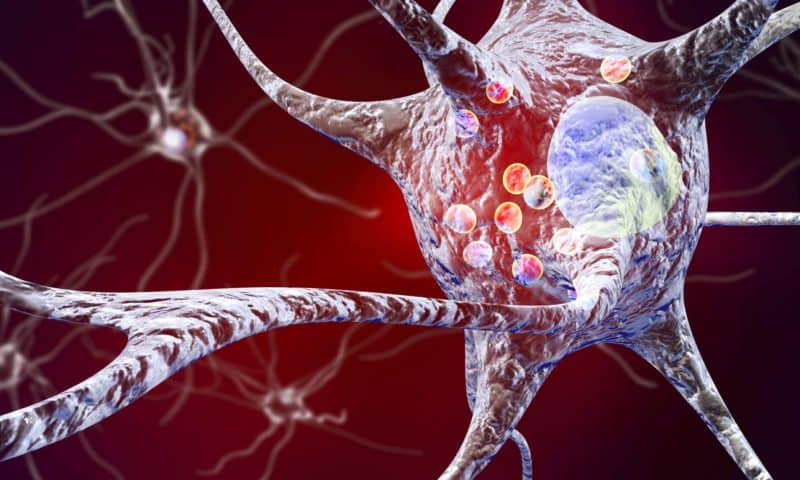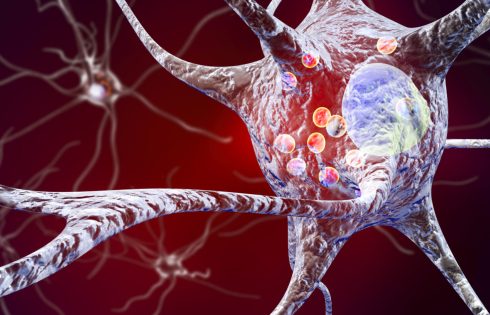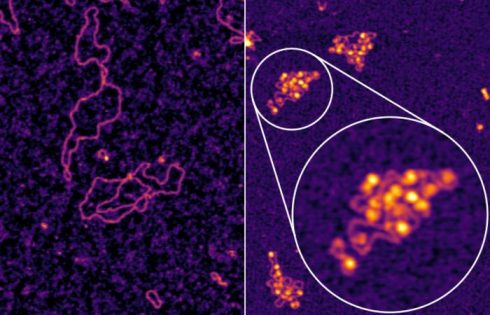
As part of their effort to answer a decades-old biological question about how the hepatitis B virus (HBV) can establish an infection in liver cells, researchers led by teams at Memorial Sloan Kettering Cancer Center (MSK), Weill Cornell Medicine, and the Rockefeller University have identified a vulnerability that may open the door to new HBV treatments.
The team successfully disrupted the virus’s ability to infect human liver cells in the laboratory using a chromatin-destabilizing molecule CBL137, which is already in clinical trials against cancer. The results lay the groundwork for animal model studies and potential drug development.
Headed by chemical biologist Yael David, PhD, at MSK, working with hepatologist and virologist Robert Schwartz, MD, PhD, at Weill Cornell Medicine and Viviana Risca, PhD, at the Rockefeller University, the researchers reported on their findings in Cell, in a paper titled, “A nucleosome switch primes hepatitis B virus infection.”
Chronic HBV infection is an incurable pathogen responsible for causing liver disease and hepatocellular carcinoma, the authors wrote. “Over 325 million people worldwide are chronically infected by hepatitis B virus … leading to almost one million deaths annually despite the availability of effective vaccines.” Chronic infection leaves patients at risk for advanced liver disease, and HBV is estimated to cause nearly half of all hepatocellular carcinoma cases, the team continued.
The newly reported research began with a chance meeting and a longstanding paradox. Schwartz, an associate professor of medicine in the Division of Gastroenterology and Hepatology at Weill Cornell Medicine, was introduced to David about six years ago at a retreat for Weill Cornell Physiology, Biophysics, and Systems Biology graduate school faculty, where they both hold appointments.
“On the surface, our research programs seem to have no overlap,” David said. “He studies hepatitis B, while my lab focuses on understanding how gene expression is regulated through a process called epigenetics. However, I was fascinated to discover that viruses like hepatitis B hijack epigenetic mechanisms, even using human DNA-packaging proteins to regulate their activity.”
Not long after, study first author Nicholas Prescott, PhD, then a doctoral student in the Tri-Institutional PhD Program in Chemical Biology, was preparing for a stint in the David Lab at MSK’s Sloan Kettering Institute. “His interest in epigenetic regulation in pathogens immediately made me consider HBV an ideal model system for him to explore,” David said.
At the heart of the mystery that intrigued the researchers lies a key viral gene that encodes for the HBV X protein (HBx). This protein is essential for HBV to establish a productive infection in host cells and the expression of its viral genes. However, the X gene itself is encoded within the viral genome.
“This raises a classic chicken-and-egg question that has puzzled scientists for decades,” David said. “How does the virus produce enough X protein to drive viral gene expression and establish infection?” The authors further commented “… HBx is absent from the virion and must be expressed de novo in freshly infected hepatocytes …”
Furthermore, the gene that encodes protein X is considered the virus’s oncogene—that is, the gene responsible for the disease’s progression toward cancer, Prescott added. That’s because protein X degrades proteins in the host that are involved with DNA repair. Not only does this keep the host from silencing protein X’s activity, but the infected cells are also more likely to accumulate DNA errors that build up over the years and decades, leading to the development of cancer.
“One of the main challenges with treating hepatitis B is that the existing treatments can stop the virus from making new copies of itself, but they don’t fully clear the virus from infected cells, allowing the virus to persist in the liver and maintain chronic infection,” noted Schwartz, whose lab contributed biological and clinical expertise in the virus, as well as the human liver cell models used in the study. “The current standard of care (long-term treatment with oral nucleos(t)ide analogs or short-term treatment with interferon-alpha injections) halts viral replication but falls short of eradicating cccDNA in infected hepatocytes, allowing the minichromosome to persist and sustain chronic infection,” the investigators stated. “Even with long-term antiviral treatment, basal levels of the HBV oncogenic X protein (HBx) remain in hepatocytes to promote genomic instability and disease progression.”
The hepatitis B vaccine is effective, but maintaining immunity often requires booster shots. Moreover, it doesn’t help people who are already infected. This happens, for example, due to transmission of the virus from mother to child, which is very common in developing countries. Access to vaccines and treatment is also more limited in some parts of Africa and Asia, where rates of infection are higher.
Digging into the mystery of protein X was a challenge, explained Prescott, who is now a postdoctoral fellow in the Laboratory of Chromosome and Cell Biology at the Rockefeller University. The existing tools weren’t capable of shedding light on what was happening in those critical early hours of an infection.
Early in infection, HBV establishes an independent “minichromosome” consisting of the viral covalently closed circular DNA (cccDNA) genome and host histones. But as the authors noted, “Despite extensive study, a significant knowledge gap remains regarding the role of viral chromatin status in establishing infection.”
The David Lab’s expertise is in how DNA gets packaged, read, and modified proved essential. For their newly reported research, the researchers successfully generated the HBV minichromosome for the first time, using their capabilities in reconstituting viral DNA in complex with human histones—the proteins that package and organize DNA. The research team determined that in order for protein X to get made, the hepatitis B virus’s DNA needs to get organized into DNA-histone complexes called nucleosomes. “… we generated recombinant, chromatinized cccDNA, allowing us to characterize its biophysical properties and to map nucleosome positioning on the minichromosome,” the scientists explained.
“This platform became a powerful tool not only to study the virus’s biochemistry but also to analyze, in detail, what happens in the critical first hours of an infection,” David said.
Nucleosomes are like beads on a string—the string is the viral DNA, and the beads are host-provided histone proteins, around which DNA gets wrapped; nucleosomes are the building blocks of chromatin, the material that makes up chromosomes.
It was this part of the project that tapped into the expertise of Risca at Rockefeller University. The Risca Lab studies the 3D architecture of the genome and how the packaging of DNA helps to control the transcription of genes. They had the tools and expertise to ensure that what the scientists were seeing in the new platform for studying the virus matched the reality of a human infection.
“Conventional wisdom says that packaging a gene’s DNA into nucleosomes would block or slow down the cell’s ability to read out that gene to make functional proteins, like protein X,” Risca commented. “But in complex organisms like humans and in the viruses that infect us, gene regulation is not always so straightforward. The presence and the positioning of nucleosomes on DNA can be important in directing cellular mechanisms to transcribe some genes. We found that to be the case for the HBV gene encoding protein X—the presence of nucleosomes on the viral genome is necessary for the transcription of RNA that gives rise to functional protein X.” The authors added. “Altogether, these data suggest a correlation between early cccDNA chromatinization and X transcription, which both occur during the first hours of infection.”
This discovery opens the door to understanding how the X gene is regulated and how HBV infection is established. Moreover, the researchers discovered a potential therapeutic opportunity. If it’s possible to disrupt the formation of these chromatin structures, then this could disrupt the virus’s ability to start and maintain an infection. “Given this link between chromatinization and transcription, we next hypothesized that disrupting chromatin assembly might inhibit viral transcription,” they wrote.
The team tested five small-molecule compounds known to impair chromatin formation. Only one, an anticancer drug candidate called CBL137, blocked production of protein X in liver cells.
Importantly, the compound worked in vitro at very low concentrations—many times smaller than participants in clinical trials for cancer were receiving, and using doses that only affected the virus, but not human cells. Their experimental results, they noted, “… demonstrate CBL137 as an effective inhibitor of HBV transcription and replication that may pose a potential therapeutic avenue to treat infections.”
David noted, “This made us very optimistic about the possibility of developing a treatment approach while preventing or limiting side effects. Moreover, if these results are confirmed through additional study, we are optimistic the approach could be used to treat chronic infections for the first time—and therefore could represent a potential cure.”
Additionally, CBL137 might prove similarly useful to target or study other chromatinized DNA viruses such as herpesviruses and papillomaviruses, the researchers noted. “Chromatin destabilization by CBL137 merits further investigation to test if it could prove similarly effective on other pathogens. Indeed, recent studies reported encouraging results for CBL137 as a latency reversing agent in HIV-1 infection and even a lead for drug discovery efforts against human African trypanosomiasis, underscoring its potential as a therapeutic against infectious diseases.
The project David pointed out, “…started from our fundamental interest in how the virus’s chromosomes might look and function and led to unexpected discoveries of how the viral infection is established in human cells.”
To further develop the team’s research toward a potential clinical trial, the next step would be to study the safety and effectiveness of CBL137 in animal models—though these are limited due to the narrow range of species HBV can infect, the researchers said.
All of the researchers stressed that the study wouldn’t have been possible without the close collaboration between the three institutions, which brought together the necessary expertise and technological resources—from MSK’s atomic force microscope to the Genomics Resource Center and High-Performance Computing Cluster at Rockefeller University.
Prescott commented, “This is a great example of how investment in ‘basic science’ and investigation of fundamental biological questions can open the door to medical advances,” he said. “I always thought I’d be working on questions that decades later someone might cite in a paper when they come up with a cure for some disease. Never in a million years did I expect to lead a project that identified such a strong candidate for drug development for a global scourge like hepatitis B.”



